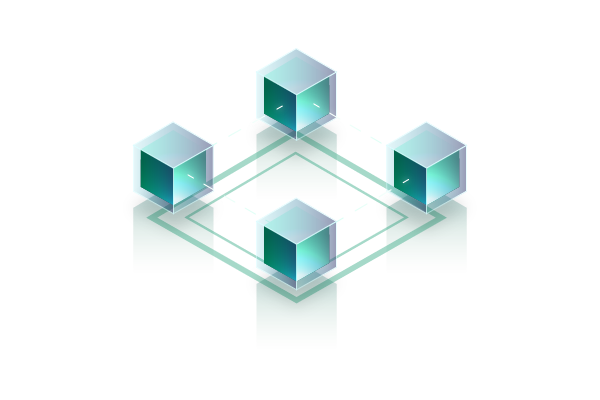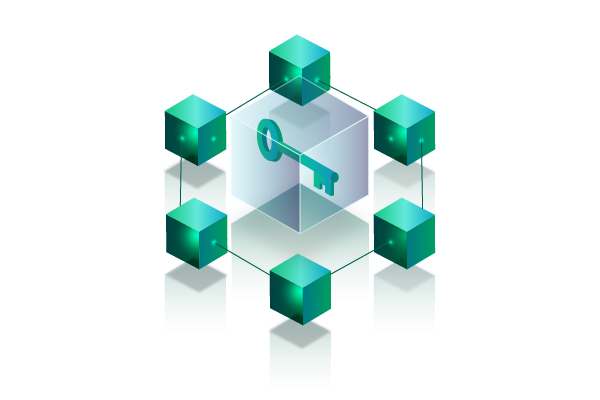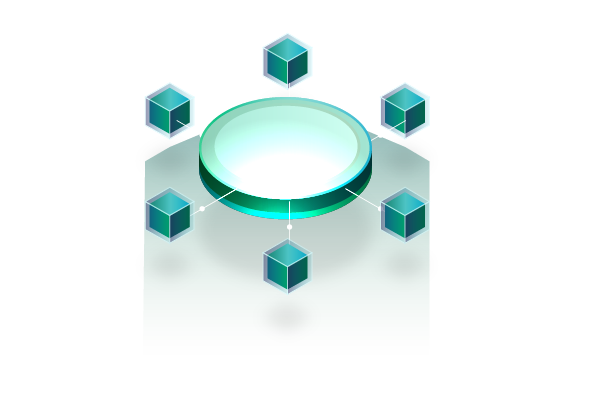You may have heard of blockchain in the news or on social media. Maybe someone mentioned it while talking about Bitcoin or cryptocurrencies. But what is blockchain technology, really? Is it just about money, or is there more behind the idea?
In this article, you’ll get a clear and simple explanation of blockchain technology. You don’t need a tech background. We’ll walk through what blockchain is, how it works, and why many people believe it can change how we store and share data.
By the end, you’ll understand the key parts of blockchain, where it is used today, and what it might mean for the future. Let’s break it down step by step.
What is Blockchain Technology?

Blockchain is a way to store and share information across a network of computers. Instead of keeping data in one place, blockchain spreads it across many computers. This makes it harder to change, cheat, or lose the data.
A “block” is a group of data. These blocks are linked together in a line—a “chain.” Each block has three parts:
- Data (like transactions or records)
- A unique code called a hash
- The hash of the block before it
This design makes sure that if you try to change one block, it affects every block after it. That’s why blockchain is seen as secure and trustworthy.
Blockchain is not controlled by one person or company. Instead, everyone in the network works together to keep it running. This makes it decentralized—one of its key features.
How Does Blockchain Work?
Understanding how blockchain works can seem hard at first, but it becomes easier when you break it into steps. Let’s walk through what happens during a typical transaction on a blockchain network. This will help you see how the system works without needing to know programming or advanced technology.
1. A transaction is made.
Someone wants to send digital money (like Bitcoin) to another person. This action is called a transaction. It could be anything—a payment, a contract update, or even a vote. The user creates the transaction using a digital wallet, which is like an app that lets people send and receive cryptocurrencies or data.
2. The transaction is shared.
After the transaction is made, it gets broadcast to a group of computers on the network. These computers are called nodes. They receive the transaction and prepare to check if it is real. Everyone in the network sees the same information, which makes it open and fair.
3. The network checks the transaction.
The nodes then work together to confirm the transaction is valid. They check things like whether the person sending the money really has enough in their digital wallet. They also check if the digital signature (used to prove the sender’s identity) is correct. If everything checks out, the transaction is approved.
4. A new block is created.
Once approved, the transaction is grouped with other confirmed transactions to form a new block. This block includes a set of transactions, a special code (called a hash), and a link to the previous block. Creating the block takes some computer work, especially in public blockchains that use mining.
5. The block is added to the chain.
The new block is then attached to the chain of earlier blocks. This connection uses the hash of the last block, which helps keep the entire chain in order and secure. If someone tries to change a block, the link breaks, and everyone in the network can see it.
6. The transaction is complete.
Now the transaction is part of the blockchain forever. It can’t be changed or removed. It is visible to anyone in the network (on public blockchains), and both the sender and receiver can trust that it went through safely.
This whole process may sound complex, but it usually happens in just a few minutes. In blockchains that use mining, computers spend energy and time solving puzzles to confirm blocks. These miners are rewarded with cryptocurrency for their help.
Blockchain works because all the steps are shared and verified by the network. It builds trust not by having a middleman, but by letting everyone see and agree on what’s true.
Basic Terms in Blockchain
| Term | Meaning |
| Block | A set of data, such as transactions |
| Chain | A series of blocks linked together in order |
| Hash | A unique code that helps identify each block |
| Node | A computer that helps run and verify the blockchain |
| Mining | The process of verifying transactions and adding new blocks |
| Decentralized | Not controlled by one central group or person |
Blockchain may sound new, but its step-by-step method of checking and recording transactions is actually quite logical. Once you understand how each part works, it’s easy to see why this technology is gaining so much attention across the world.
Also Read: 12 Best Real-World Applications of Blockchain Technology in 2025
Key Features of Blockchain

Blockchain is not just another way to store information. It introduces a new structure that brings unique advantages. These features are the reason blockchain is being used in many industries today—from finance to healthcare to supply chains.
Let’s look at the most important features that set blockchain apart from traditional databases or centralized systems.
Decentralization
In a traditional system, data is stored and controlled by one central authority, like a bank or a company. With blockchain, there is no central control. Instead, the system is spread across many computers (called nodes) that work together. This means no single person, company, or government owns the system. Decentralization makes the system more open and reduces the risk of one point of failure or corruption.
Transparency
All confirmed transactions are recorded in the blockchain and can be viewed by anyone in the network, especially in public blockchains like Bitcoin or Ethereum. This helps build trust among users. Everyone sees the same information, which reduces the chance of fraud or hidden activity. While names and private details are hidden, the transaction history itself is open and traceable.
Security
Each block in the blockchain is connected to the previous one using a special code called a hash. This design makes the system very secure. If someone tries to change the data in one block, it would break the link to the next block, making the tampering easy to detect. Changing one block would also require changing every block after it—and doing that across the entire network at the same time, which is nearly impossible.
Immutability
Once data is added to the blockchain, it cannot be edited or removed. This is called immutability, and it ensures that records stay as they were originally written. It’s especially useful for storing contracts, certificates, or historical records. This gives confidence that once something is written to the blockchain, it cannot be changed in secret.
Smart Contracts
Smart contracts are simple programs that run on the blockchain. They automatically carry out actions when certain rules or conditions are met. For example, a smart contract could release payment only after a package is delivered. These contracts help reduce the need for third parties, lower costs, and speed up business processes. They are a big reason blockchain is useful beyond just money.
These features work together to make blockchain a powerful and flexible tool. It’s not just a new way to store data—it’s a system built for trust, fairness, and independence. As more people and businesses look for secure and transparent ways to share data, blockchain is becoming a valuable part of the digital world.
Real-World Uses of Blockchain
Many people think blockchain is only used for cryptocurrency like Bitcoin. But that’s just one part of the story. In fact, blockchain is already being used in many areas beyond digital money. Businesses, governments, and even hospitals are exploring how blockchain can help them work better, faster, and more securely.
Below are some of the most common and growing real-world uses of blockchain across different industries.
1. Finance
The finance industry was one of the first to adopt blockchain. Banks and money transfer services are using it to make transactions faster, safer, and cheaper. Normally, sending money across countries takes days and requires middlemen who charge fees. With blockchain, these payments can be done in minutes, directly between users. Blockchain also helps reduce fraud, because all transactions are recorded and cannot be changed.
2. Supply Chains
Supply chains involve the movement of products from factories to stores to customers. Blockchain helps track each step of this journey. With every product recorded in the blockchain, companies can see exactly where an item has been and when. This makes it easier to catch delays, prevent fake goods, and improve trust between suppliers, sellers, and buyers. It also gives consumers more confidence in where their products come from.
3. Healthcare
Hospitals and clinics deal with a lot of personal information. Blockchain can help protect this data by allowing it to be stored securely and only shared with approved people. For example, a patient’s medical record can be stored on a blockchain and accessed by doctors in different hospitals only when the patient gives permission. This keeps the data safe and improves care by giving doctors access to complete and up-to-date information.
4. Voting Systems
Some governments and private groups are testing blockchain for voting. The goal is to make voting safer, faster, and more open. Blockchain voting systems could allow people to vote online and still keep the process secure. Each vote is recorded in a block, which cannot be changed, making it harder to cheat. This could help reduce fraud, improve trust in elections, and even allow more people to take part in the process.
5. Digital Identity
In today’s digital world, proving who you are online is not always easy or safe. Blockchain can give people more control over their digital identity. Instead of using passwords or giving personal information to many websites, users can store their identity on a blockchain and choose when and with whom to share it. This can reduce the risk of identity theft and make online services easier and more secure to use.
Blockchain Use Cases
| Industry | Blockchain Use |
| Banking & Finance | Fast, low-cost international payments |
| Logistics | Track goods from start to end |
| Healthcare | Secure patient data sharing |
| Government | Electronic voting, ID verification |
| Real Estate | Smart contracts for faster property deals |
These examples show that blockchain is more than just a tool for cryptocurrency. It’s a flexible and secure way to record and share information, with the potential to improve many parts of daily life and business. As more people explore its uses, we can expect even more real-world applications to appear in the years ahead.
Types of Blockchains

Blockchain is not a one-size-fits-all solution. There are different types of blockchains designed for different needs. Some are made for open, public use, while others are built for private business operations. Understanding the three main types can help you see how blockchain can be used in many ways—from cryptocurrency to company data sharing.
Let’s look at the main types of blockchains and what makes each one different.
1. Public Blockchains
These blockchains are open to everyone. Anyone can join the network, read data, send transactions, and take part in the process of verifying new blocks.
Key features:
- Open and accessible to all
- No central authority
- Fully transparent
- Usually slower due to high network activity
- Examples: Bitcoin, Ethereum
Public blockchains are often used for cryptocurrency and other systems where trust and openness are important. They are considered the most decentralized type of blockchain.
2. Private Blockchains
These are used by one organization or company. Only selected users can access the network and make changes. The organization controls who joins and what actions they can take.
Key features:
- Access limited to approved users
- Controlled by one organization
- Faster and more efficient than public blockchains
- Less transparent, but more private
- Best for internal business operations
Private blockchains are useful for companies that want the benefits of blockchain—like security and data tracking—but don’t want to make everything public.
3. Consortium Blockchains
Also known as federated blockchains, these are shared by a group of organizations instead of just one. The members work together to manage the blockchain and set rules for participation.
Key features:
- Controlled by a group, not a single party
- Access is limited to member organizations
- Balanced between openness and privacy
- Good for industry partnerships or joint ventures
- More efficient than public blockchains
Consortium blockchains are often used when multiple companies need to work together but still want control and privacy—for example, in banking networks or global supply chains.
Each type of blockchain has its strengths and weaknesses, depending on how it’s used.
- Public blockchains are best when trust, openness, and decentralization are most important.
- Private blockchains are better for companies that need privacy and speed.
- Consortium blockchains work well for groups of organizations that want to share data and responsibilities.
Choosing the right type of blockchain depends on the goal—whether it’s open access, control, speed, or cooperation.
Blockchain is flexible, and understanding these types helps explain why it’s being used in so many different industries today.
Also Read: How Blockchain Technology is Driving Social Change
Common Misunderstandings About Blockchain
Many people think blockchain and Bitcoin are the same thing. But that’s not true. Bitcoin is just one use of blockchain. The technology can work without any cryptocurrency.
Another common idea is that blockchain is always anonymous. That depends on the type of blockchain. Public chains like Bitcoin let anyone see transactions, though names are not shown. In private chains, the rules can be different.
Also, some think blockchain can’t be hacked. While it’s very secure, it’s not perfect. Weak points can come from how apps use the blockchain, not the blockchain itself.
Conclusion
Blockchain technology is a new way to store and share data. It uses a system of linked blocks to create a secure and shared record. Because no single person or group controls it, it brings more trust and safety to many systems.
Today, blockchain is changing how people handle money, store records, track goods, and more. It may not be the answer to every problem, but it opens new doors for solving issues that need trust and clear records.
If you’re just learning about blockchain, take it slow. The ideas may seem new at first, but they are based on clear logic. And as the technology grows, understanding it will become more important in everyday life.
Disclaimer: The information provided by HeLa Labs in this article is intended for general informational purposes and does not reflect the company’s opinion. It is not intended as investment advice or recommendations. Readers are strongly advised to conduct their own thorough research and consult with a qualified financial advisor before making any financial decisions.

Joshua Soriano
I am a writer specializing in decentralized systems, digital assets, and Web3 innovation. I develop research-driven explainers, case studies, and thought leadership that connect blockchain infrastructure, smart contract design, and tokenization models to real-world outcomes.
My work focuses on translating complex technical concepts into clear, actionable narratives for builders, businesses, and investors, highlighting transparency, security, and operational efficiency. Each piece blends primary-source research, protocol documentation, and practitioner insights to surface what matters for adoption and risk reduction, helping teams make informed decisions with precise, accessible content.
- Joshua Soriano#molongui-disabled-link
- Joshua Soriano#molongui-disabled-link
- Joshua Soriano#molongui-disabled-link
- Joshua Soriano#molongui-disabled-link

